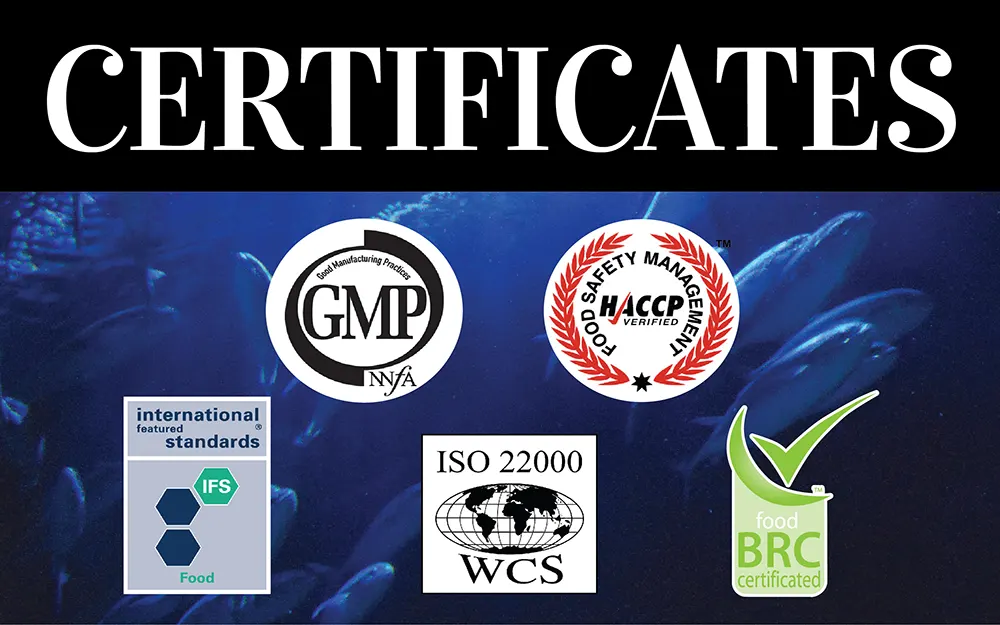
Impacts of China’s new Covid approach hitting seafood, processing industries: SeafoodSource News

Mark Godfrey : SeafoodSource News
There are signs seafood demand is picking up in China after the country abandoned its zero-Covid policy in November 2022 and eliminated its checks and disinfection routines for seafood imports at its ports. But uncertainty abounds as to what the rapid spread of the virus in China will mean for domestic consumption and for the operation of seafood-processing facilities.
Seafood trader Pablo Resnik, head of business development at Spanish shrimp exporter Roda International, which has an office in China, told SeafoodSource that there’s been a rebound in orders for containers this month. But that recovery may be tepid and short-lived given the impact of Covid’s spread on domestic consumers, he said.
“The high number of sick people reduces consumption. Chinese buyers have the stocks and now they start to slow down the rate of imports,” he said.
Oliver Nikolovski, general director of Shanghai-based sourcing and trading firm Ocean Treasure, said he expects more demand for Chinese processing capacity now that Covid-related operating restrictions have been removed.
“Higher energy costs in Europe mean we are getting a lot more inquiries from customers there about doing more of their processing and marinating in China,” Nikolovski said.
Chinese importers are also regaining the courage to resume business, Nikolovski told SeafoodSource.
“They’re starting to place orders with us again. They’re asking for one or two containers,” he said.
Yet Nikolovski said he’s worried a large number of Chinese factories have been bankrupted by the pandemic and is concerned that the domestic market – increasingly important for Chinese factories – will take months to get back to pre-pandemic levels of demand.
“There are many people sick and many restaurants in Shanghai are closed. We are at 60 percent normalcy,” he said. “It will take three to four months for a partial recovery and a year for a full recovery of the demand.”
Others are hopeful for a quicker recovery. Landy Chow, head of Siam Canadian’s Guangzhou office, said he expects demand in the restaurant trade to have normalized by March 2023, the date at which Chinese importers will start to place more orders in earnest.
“Import and export of seafood is easier now,” he told SeafoodSource.
Freight costs have also fallen to below pre-pandemic levels, further facilitating trade. Yet the Covid variants currently ripping through China are playing havoc on worker availability, according to Gary Wilcox, the CEO of JAG UFS Group, a freight agency with offices in China.
“A new variant hit recently and spread across the country very quickly. Our workforce was forced to work from home again,” he told SeafoodSource.
New variants are likely to spread after the Chinese New Year festivities, said Wilcox, given the government has not this year – as it had in recent years – ordered the cancelation of Chinese New Year family celebrations.
Wilcox also believes that lower freight rates may also spur demand from China’s overseas customers. Chinese exports have been weak due to inflation in the E.U. and U.S., its principal markets, dropping 8.7 percent and 9.9 percent year-over-year in November and December, respectively.
Demand in seafood export markets looks set to remain weak, according to Nick Ovchinnikov, the CEO of Oceanside, California, U.S.A.-based seafood trader Lotus Seafood.
“There’s plenty of expensive inventory everyone is sitting on, while replacement costs are much lower,” he told SeafoodSource.
Ovchinnikov said demand may recover in the third quarter of 2023 – a view reflected by executives with Mazzetta Co. and other U.S. firms participating in the Global Seafood Market Conference in California in mid-January – but in the meantime sees a “consumer preference to switch from more-expensive seafood to less-expensive items in view of high inflation and possible recession.”
That could help Chinese processors and speed a recovery in China, which in turn would help balance global prices, Ovchinnikov said.
Even though Western consumers are downsizing their seafood spend, Bjorn Marius Jonasson, head of sales at Iceland Seafood, which sources and sells in China, is skeptical that Chinese processing factories will benefit from the short-term global economic conditions. He pointed out that energy costs have risen in China, too, while freight costs have dropped.
“There are so many factors in play that focusing on one aspect, like energy costs, is like watching the English Premier League from the vantage point of the right full back,” he said. “It’s a limited view.”
Jonasson said he does expect Chinese seafood importers and processors to recover lost business with the removal of Covid-related barriers.
“The key is returning freedom of trade and removal of barriers,” Jonasson said. “When Western markets relinquished restrictions, trade trended upwards. I expect China to follow suit.”
Even with some restaurants closed due to Covid, demand for premium products in China appears to be holding, a sign that a stronger recovery may be imminent, according to Geoff Irvine, head of the Lobster Council of Canada, a trade group. Demand for the Chinese New Year has been “better than anticipated,” he told SeafoodSource.
“Exports of live lobster to China in 2022 were very close to 2021, which was a record year,” he said.
James Parfitt, CEO of New Zealand-based sea cucumber exporter Wild Catch, said he’s is optimistic about his firm’s sales to China this year He told SeafoodSource that while Covid restrictions and testing have been dropped, his company is anticipating that China’s tightened regulatory regime covering its seafood imports will in the long run reduce the amount of unregulated species entering the market, thus leading to more demand for legitimate operators like him.



